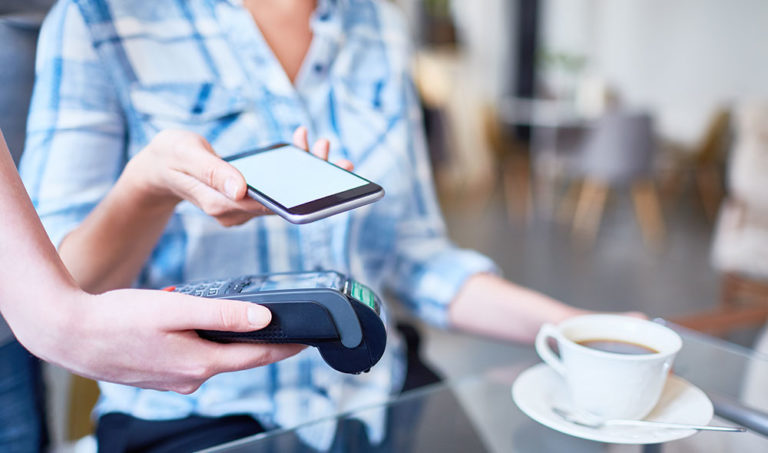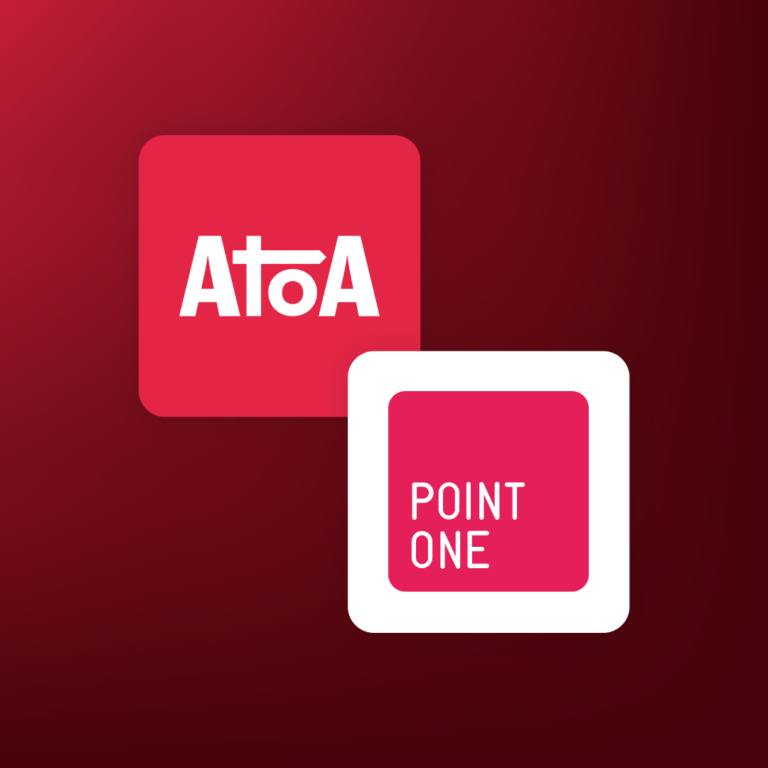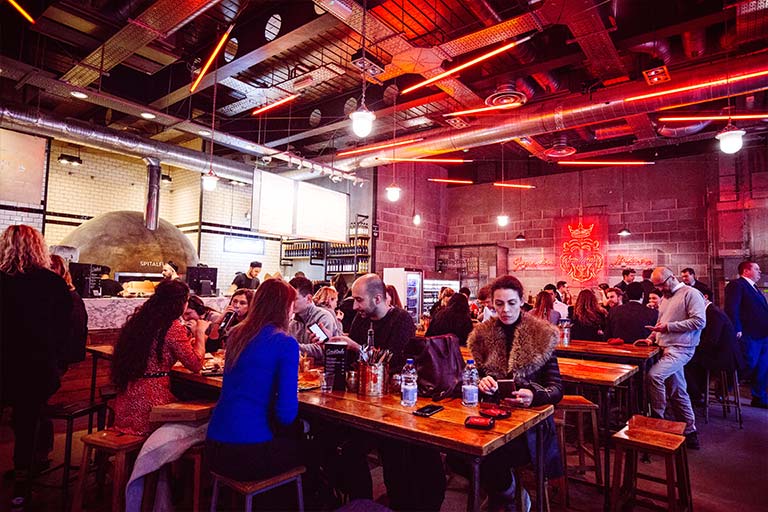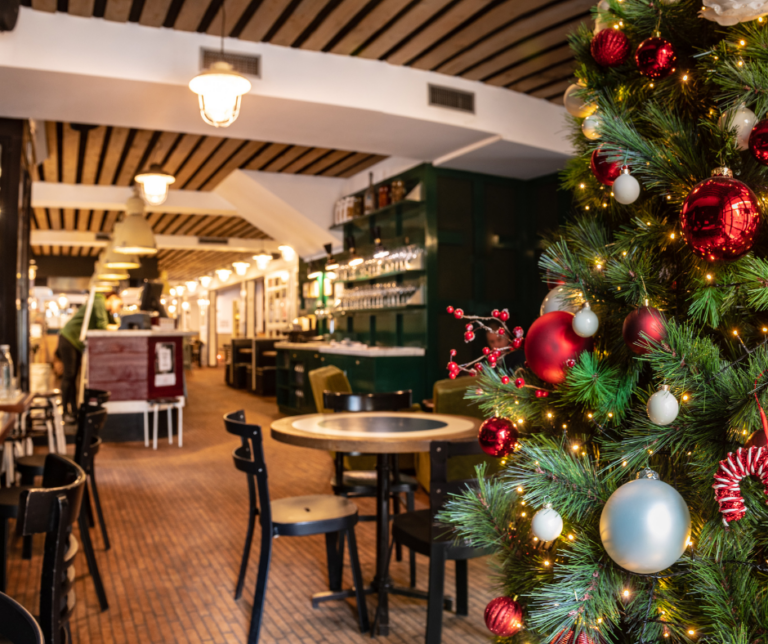Takeaway, meal-kits, catering and some clever merchandising ideas have helped many operators keep some vital cashflow going until they can safely reopen to dine-in but realists know that the vaccine is not a panacea and restrictions in some shape or form will continue throughout 2021. Not to mention the fundamental change that has occurred in people’s mindsets when it comes to dining out. Social distancing and a digitised experience are now firmly part of the way people interact with restaurant brands.
With this in mind getting your operation running with a contactless mindset post-lockdown and beyond makes a lot of business sense. Although QSRs are best placed to adopt a truly contactless experience, casual dining and even fine dining restaurants can also adopt some degree of contactless measures to safeguard customer and staff safety.
The customer journey: eliminating touchpoints between customers and staff
The three key steps in the order-fulfilment process are ordering, food prep and delivery be it dine-in, collection or delivery. Contactless practices can be implemented into all three of these areas thanks to clever tech integration:
1. Ordering and payment
Mobile order & pay
Mobile ordering has come into maturity on the back of the pandemic fueled by a necessity for social distancing and contactless payment. In a survey commissioned by Hostech it found that 26.4% of people had used a mobile order & pay app after March 2020 compared to 15% before. Numerous options for this exist and are explored in more detail in our blog: ‘How to choose the right mobile order & pay app solution for your restaurant, pub or cafe business’
Many have revived the use of QR codes as a quick, contactless way to scan for access into the app, or to review a digital menu and even to leave a review or post-meal feedback. These all limit the need for staff and customer interaction and therefore limit the spread of germs but they also bring efficiencies and the ability to drive growth by offering a more frictionless customer journey.
Less staff are needed on the floor or at the counter to take orders and by relying on a digital menu, the upsell opportunities are increased. Digital menus tend to build bigger orders via additional modifiers and customisable options as customers feel less under pressure and more open to suggestions for upsells when offered digitally rather by a staff member.
Your app can also be a vehicle for communication to reduce the need for face-to-face questions with your staff. For example, it is an ideal platform to offer reassurance on safety procedures during the pandemic. A whopping 92% of those surveyed by KAM Media in Aug 2020 said they wanted to see clear communication of safety measures and procedures in venues via websites and apps.
Another benefit of using a mobile & pay app is the opportunity to cater to the digital-first diner a.ka. Generation Z-ers and Millennials. This customer base expects a homogenized experience of your brand touchpoints across all your channels, online and off. Digital-first diners will demand omnichannel continuity that gives instant recognition of, and experience with, your brand regardless of where they encounter it. Although many operators are already catering for this digital shift, the pandemic has certainly been the catalyst that has made it a necessity.
Kiosks
Self-serve kiosks are a proven and widely accepted technology within retail and thanks to QSR chains like McDonald’s, this is another contactless technology that is growing in use by QSR, fast food and casual dining restaurants in the UK.
They have the same upsell benefits of a digital menu and although they require a touchscreen, many operators have introduced a manual cleaning down of the screen after each use to lessen fears about cross-contamination through touch. To mitigate against this in the future, tech providers are exploring the use of voice and gesture control to make kiosks truly contactless and accessible to an even wider audience.
Loyalty driven by AI
The added benefit of both of these options is that they integrate perfectly with your loyalty software so with each transaction, your customer buying behaviour is being captured.
AI is already being used to help automate customer service enquiries such as chatbots taking bookings and dealing with simple enquiries on operator’s websites. But where it is really pushing the boundaries for running a contactless operation is with its menu capability.
Using machine-learning to offer true personalisation based on customer order behaviour means all the upsell options discussed earlier become 100% relevant. This enables you to offer automated upsells not just based on their order selection but also on your customer’s historic order preferences.
Do they have a weak spot for the extra side of ribs for example? Before they get to the checkout, offer them a special deal on this favourite and watch it fly into the basket! Zachary Goldstein, CEO of CRM platform, Thanx says, “Personalised offers have a four to 10 times higher engagement rate than those that are generic”.
Play the above scenario out in a regular ‘at the counter’ order and a) your staff member would have no knowledge of these customer’s favourites to suggest the personalised upsell and b) stats show that customers are less likely to go for upsells at the counter.
Cashless payment
Both mobile order & pay and self-serve kiosks facilitate contactless pay, whether by card or mobile pay. The pandemic has prompted some operators to transition to a 100% cashless business to limit the associated risk of handling cash that could harbour the virus. Although the Bank of England and the World Health Authority (WHO) say the risk of virus transmission on banknotes is “low”, the Financial Conduct Authority (FCA) have already increased the limit on a single payment using contactless card tech to £45 and are now reported to be considering another rise to £100.
It shows that there continues to be a shift in the public use of cash versus contactless as UK Finance reported a 16% increase in the total value of contactless payments in the UK in October compared with the same month a year earlier. Indeed, the amount spent on contactless hit a monthly record in August 2020, boosted by the Eat Out to Help Out scheme and fewer coronavirus-related restrictions. A total of £8.4bn was spent on credit and debit cards using contactless during that month.
Benefits of contactless at the order and pay stage
For operators:
- Redistribution or less staff needed as more order and payment automation.
- Less chance of human error in taking orders.
- Allows you to know your loyal customers better and offer them what they want based on real-time insight/feedback.
- Digital customer journey drives growth i.e. upselling (just good customer service) and new revenue streams.
For customers:
- Safety – limits the need for interaction with staff and allows contactless payment.
- Control and convenience – customers can order and pay when they choose without having to wait for a staff member if dining in or where they choose if ordering online.
- Personalised from start to finish. Second-guessing needs, offering relevant incentives and leaving customers feeling truly valued by the brand.
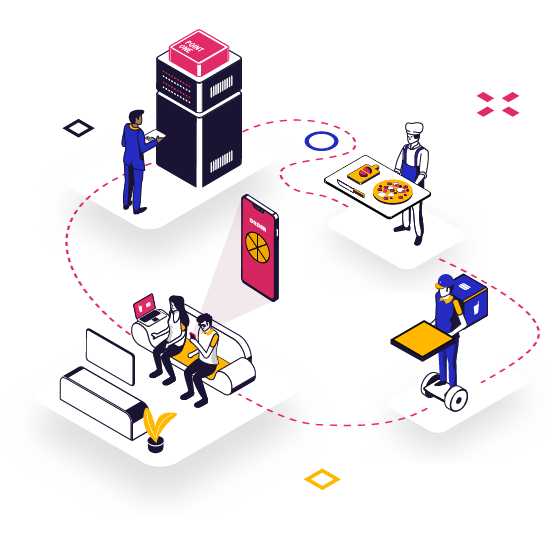
2. Food preparation
Restaurants that offer takeaway and delivery already know that it can be a logistical mess trying to get orders out to the right people at the right times. That’s why being able to use technology to streamline orders is so crucial—pandemic or not. Using specialised technology to sort orders by when they’re placed or by when they’ll be picked up can help minimise the number of people crowding in a restaurant’s entrance and can also ensure that the right order is handed over or set aside for collection.
Timing and order accuracy will become a differentiator for restaurants. Get it right and it will boost customer satisfaction.
Kitchen Management System (KMS)
This can be achieved using clever kitchen management software which works with the EPoS at the point of order to track and manage all tickets within the kitchen, displaying prep times and order status on a kitchen management screen.
The KMS can sort orders in real-time and give chefs granular detail about recipe, prep time and order priority to ensure all orders are completed efficiently and on time. Equally, for takeaway it can factor in delivery packaging preparation and if delivery – drive time, or for collection – a defined pick-up time so wait times and congestion in the restaurant is reduced.
Food automation
Robots in the kitchen have been talked about for some time and we have been treated to images of burger-flipping robots in some fast-food restaurants in America but is this really a thing that operators should be seriously considering?
Well, the answer is possibly yes. We have to think creatively about how to drive contactless into the back of house functions. Robotics are being touted as a game-changer for operators and customers because they offer increased productivity and reduced costs which should transfer down the line to the consumer. But the main benefit they bring in the time of COVID-19 is the reality of contactless food preparation or rather, non-human contact, and a sterile environment to drastically cut the chances of virus transmission in the kitchen.
Itsu has already opened its first 100% digital ‘store of the future’ site in London that features sushi robots. Traditionally, sushi chefs mould nigiri by hand, but Itsu said its “advanced robot technology removes unnecessary handling, decreases food wastage and increases speed time for production, as one Nigiri robot can make 4,800 pieces in an hour”. Read more in our blog: AI and automation – is this the future for kitchen management and a faster food service?
Benefits of contactless at the preparation stage
For operators:
- Less wastage and time-saving thanks to precise order management from KMS.
- Higher turnover of orders as orders come directly to the KMS for fulfilment.
For customers:
- Food prepared on time and accurate delivery or collection times given.
- Future potential of robotics in speeding up food prep, reducing human contact and driving costs down.
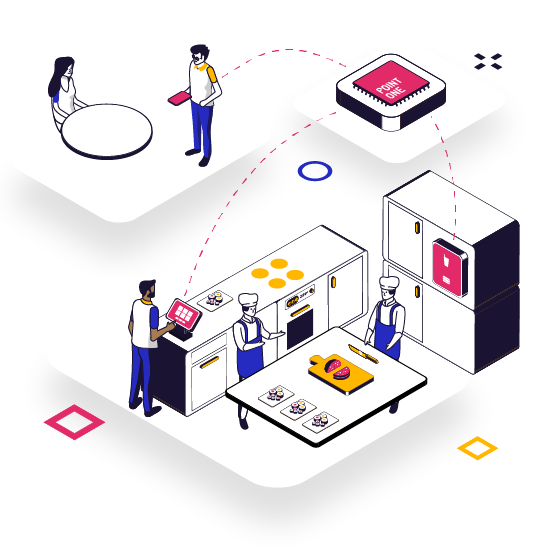
3. Food delivery to table, collection or delivery
The last component of the order fulfilment is probably the biggest area of contact and so here it’s necessary to look at all the micro-moments or potential touchpoints in the process to see where contact can either be removed entirely or reduced.
At table delivery
- Re-arrange the seating to impose a minimum of 1-metre distance between tables.
- Erect separators, either perspex screens or if you’re concerned this gives a negative impact on the ambience you can consider more creative solutions like partitions using plants for example.
- Have staff wear face masks and place food at the end of the table for customers to take and distribute rather than placing the food in front of each diner.
- Where possible move your restaurant to outdoor seating. In 2020 operators adapted quickly to offering this when the outdoor space was available or were given special permits for pavement dining.
Outdoor dining will still have a place in 2021 but now the challenge will be offering your customers a true extension of your brand experience outside. Secure the practicalities of overhead coverage and temperature control before setting your sights on recreating the dine-in ambience and driving customer satisfaction.
Collection
- Have a process in place for customers to follow. In the retail world, they have the ‘click and collect’ contactless process perfected and the process is frictionless and safe.
In an optimised hospitality collection process, customers know when to arrive, are informed when their order is ready, can notify that they are on their way, have arrived or have geo-fencing technology detect their arrival – all without contact.
Dedicated areas can be marked for ‘collection only’ so they are kept separate from diners waiting to be seated to limit congestion or any confusion, keeping the whole process clear and frictionless.
Delivery
- Sanitise all your packaging and include a flyer or sticker that outlines your food preparation precautions to reassure your customers about kitchen hygiene, use of materials, or how you minimise hands-on food with single person prep stations for example.
- Give the option for your customers to opt for a ‘contact-free’ delivery within your online ordering. All larger aggregators like Deliveroo offer this service and it means that the delivery person will let the customer know they have arrived, place the order outside their door, step a safe distance back and wait nearby for the customer to collect the food before the order can be completed.
Benefits of contactless at the delivery/collection stage
For operators:
- Potential to increase your geographic reach and customer base outside of your venue location. This in turn can grow your brand advocates thanks to word of mouth.
For customers:
- Safety – designated area for collection with staggered pick-up times to limit potential contact with other customers.
Post-order feedback
Whether its dine-in, collection or delivery, don’t forget to include a QR code or URL plus all your social media channels on the receipt, packaging or as a paper insert to encourage post-order feedback. This could ask questions not just about the food quality, but also the packaging and whether it kept the food hot, protected etc.
All feedback can help you hone and improve future orders as well as retaining brand devotees to spread the word. We all want our customers to give their compliments to the chef when feeding back to your staff at the table but if they take the time to fill out a feedback survey, post a comment on your social media or post a Tripadvisor or Aggregator platform review, these have far greater reach. Although the same is true of negative comments too so make sure you monitor and jump on any negative feedback asap to stop it escalating.
Many third party loyalty or reservation apps that integrate with your EPoS have an option to gather feedback such as OpenTable as well as dedicated solutions like Feed It Back. Recent data from Feed It Back found that 3-in-4 customers think it is the venue’s responsibility to ensure that they have a positive and memorable experience when they visit, so the pressure is on for operators to ensure that implementing a safe and contactless environment isn’t at the cost of customer experience and ambience.
Importance of brand spirit
Given that many brands differentiate themselves by their core values as shown through their staff, if you take away the human contact do you lose the spirit of the brand?
Takeaway probably has the biggest risk of this but brands flourishing here are those that keep their core brand ethos in everything they do from the comms accompanying the order to additional experiential things like a playlist to prep/eat/drink by, videos for associated recipes etc.
Brands like Bermondsey’s Nine Lives’ have created an at-home cocktail kit complete with bamboo straws, the bar’s playlist and even the same incense that they use in the bar to trick all your senses into thinking you are really there and not just on your sofa.
Final “takeaway” on contactless
It is impossible to ignore the need for taking contactless measures both for the safety of your customers and your staff. These are just some ways in which you can implement them across the order-fulfilment process. Some are easily done and others will require investment and time to see if they are right for your operation.
If 2020 was the year that operators had to learn quickly how to utilise technology and operate safely, 2021 will be the year that these solutions must be enhanced to go beyond a reactionary fix to a proactive and sophisticated dining solution that still incorporates contactless solutions for a post-pandemic world.
